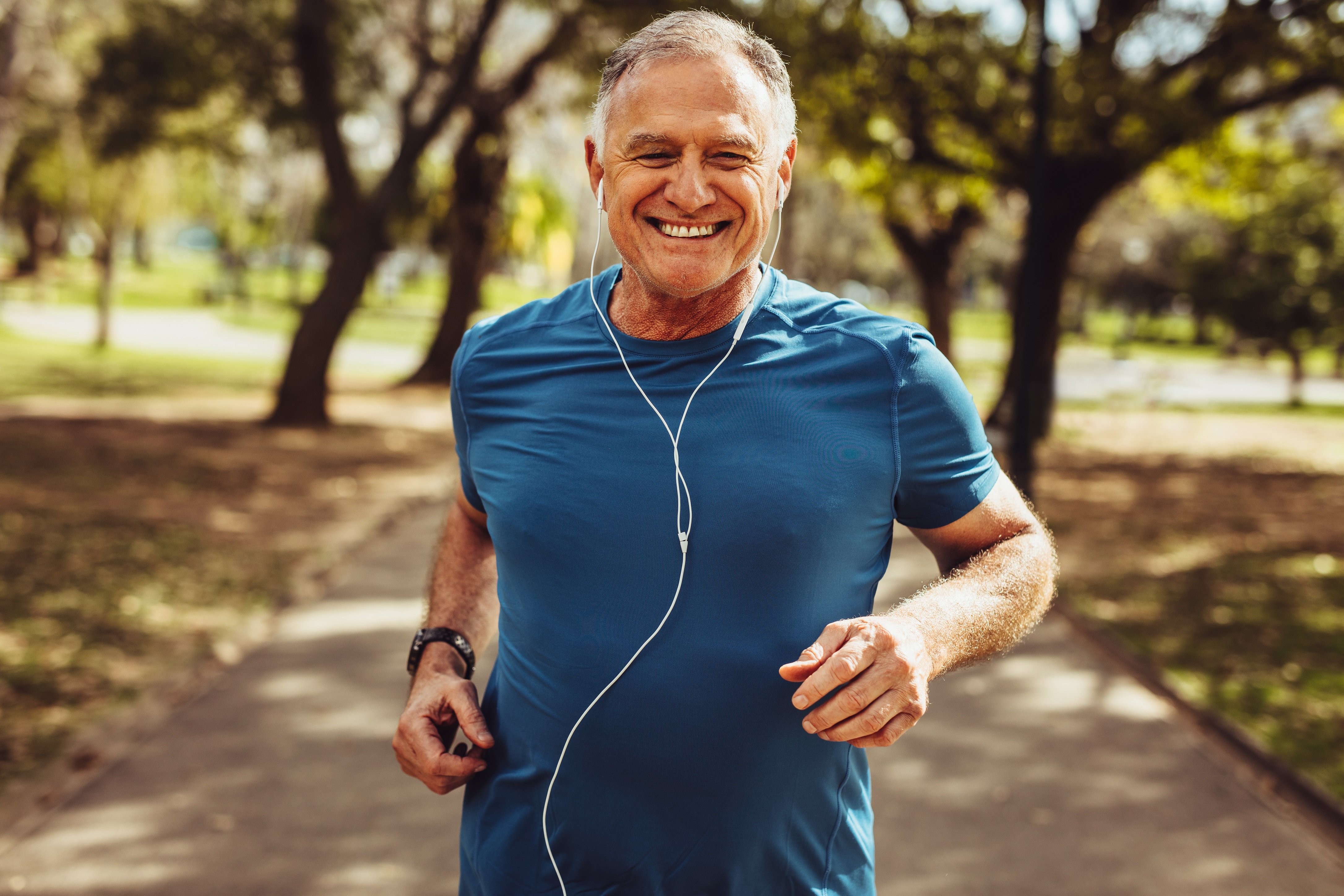Life After Prostate Cancer Treatment
5 min read

Author: Dario Pasalic, MD
A diagnosis of prostate cancer has put you on a certain path. During your journey, you have crossed milestones, such as staging, and received follow-up care ranging from watchful waiting to surgery, radiation therapy, chemotherapy, and hormone therapy. With your treatment at Rocky Mountain Cancer Centers (RMCC) complete, it might feel like you’ve reached the finish line. Yet, there is more to do to help prevent your prostate cancer from returning and lower your risk for other cancers.
Keep Seeing Your Providers Regularly
After prostate cancer treatment, you still need to check in with a doctor for a while longer.
“Regular follow-ups recommended by your referring physician and RMCC team can help keep tabs on your health and detect a new cancer occurrence,” said Dr. Dario Pasalic, board-certified radiation oncologist at RMCC.
Because cancer is treated most effectively when detected early, the American Cancer Society (ACS) advises cancer survivors to be familiar with and follow its Guidelines for the Early Detection of Cancer. Prostate cancer survivors should be alert to signs of a recurrence (when prostate cancer comes back after treatment) or the development of a second cancer.
“Follow-up care can include exams, imaging, or lab tests to monitor side effects related to treatment,” Dr. Pasalic said. “Some of these side effects take years to develop, so it’s important to let your doctor know about any problems or symptoms you experience.”
Prostate Cancer Side Effects
Side effects from prostate cancer treatment vary depending on the type of treatment you had and the time since your treatment.
If you received radiation therapy, you may experience symptoms such as loose bowel movements. You may also experience irritative symptoms. Some patients develop lymphedema, or a pooling of lymph fluid in your legs or genital area, if your lymph nodes were targeted during radiation therapy.
Patients may also experience a degree of erectile dysfunction (ED), or the inability to have an erection, especially if radiation was combined with hormone deprivation therapy.
If you received surgery, you may experience urinary incontinence or other bladder problems.
If your lymph nodes were removed, you may experience lymphedema. Surgical patients will also experience ED, problems with orgasm, and penile shortening.
Many treatment-related side effects can be managed for a good quality of life.
 Physical therapy can help with treatment-related lymphedema.
Physical therapy can help with treatment-related lymphedema.- Medications and devices are available to help patients with ED.
- To preserve fertility after prostate cancer surgery, you may elect to store sperm before treatment.
Your Osteoporosis Risk Rises After Treatment
Prostate cancer survivors are at greater risk for osteoporosis after treatment due to age and the type of treatment they received.
Both prostate cancer and osteoporosis affect men older than 65. In addition, hormone deprivation therapy — used because prostate cancer needs hormones to grow — increases the risk of osteoporosis and broken bones. Hormone therapy depletes hormone levels or changes how hormones work to slow or stop cancer, which can lead to bone thinning.
Share Symptoms of Concern
Follow-up care for men after prostate cancer helps them avoid additional cancers for which they may be at risk. Your RMCC team or referring doctor can recommend screenings based on the symptoms you experience. Screening tests, such as colonoscopies, find colorectal cancer when it’s most easily treated and before symptoms occur. Anemia – low red blood cell counts – can be another sign of trouble. To maximize your options for treatment, let your provider or the RMCC team know if you have any of the following signs of cancer.
Bladder symptoms, such as blood in the urine or feeling like you have to use the bathroom – even when your bladder is empty. You may also have difficulty urinating, pain or burning while urinating, the urge to go more often than usual, or the need to get up to urinate several times during the night.
Bowel symptoms include blood in the stool, change in bowel habits, cramping, dark-colored stools, rectal bleeding, unintended weight loss, or fatigue.
General symptoms include fever, fatigue, loss of appetite, nausea, night sweats, pain in your abdomen, vomiting, weight loss without trying, and yellowing of your eyes and skin.
Skin-related symptoms. Report if you find a lump, especially on arms or legs. Regular skin checks help you keep track of other changes, including unusual moles or new spots. New or changing spots on your skin could signal melanoma, a rare but deadly form of skin cancer which only accounts for 1% of cases.
Lifestyle Choices to Keep Prostate Cancer from Coming Back
Living a healthy lifestyle after prostate cancer treatment ends can help lower your risk of recurrence or getting another form of cancer. Celebrate your win over prostate cancer and:
 Avoid all forms of tobacco and limit exposure to secondhand smoke as well.
Avoid all forms of tobacco and limit exposure to secondhand smoke as well.- Eat a healthy diet, rich in vegetables, fruit, and whole grains, and restrict consumption of highly processed foods, red meats, and sugary drinks
- Limit alcohol consumption to no more than one drink per day. If possible, consider giving up alcohol entirely.
- Reach and maintain a healthy weight for your height.
- Stay physically active most days of the week.
Make Health a Habit
Making one small change at a time can increase the likelihood healthy habits will stick.
- Add fiber to your diet if you don’t already consume 30g daily. Eating fiber-rich foods, such as beans, fruit, vegetables, and whole grains, lowers blood cholesterol levels, helps with weight loss, addresses constipation, and reduces your risk for heart disease.
- Break down exercise goals into five- or 10-minute sessions. A new daily exercise goal can be intimidating, especially if you are just getting started. Try just five minutes of an activity that gets your heart pumping, such as walking, swimming laps, or playing pickleball. As you gain fitness, increase the duration of each exercise session or spread short exercise sessions throughout your day. Aim for at least 30 minutes of total physical activity daily.
- Grab a partner for exercise. Choosing an accountability buddy for regular exercise throughout the week is more fun and can help ensure you get your exercise in.
- Swap water for sugar-laden beverages to flush toxins and give you more energy. Drinking water can also help you achieve your weight loss goals.
Rocky Mountain Cancer Centers offers comprehensive prostate cancer therapies and resources for survivors. Learn how we never stop caring for you.